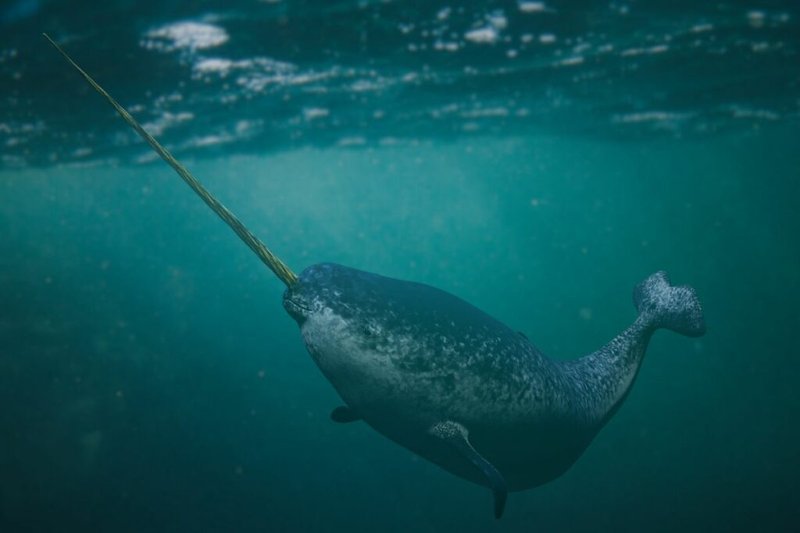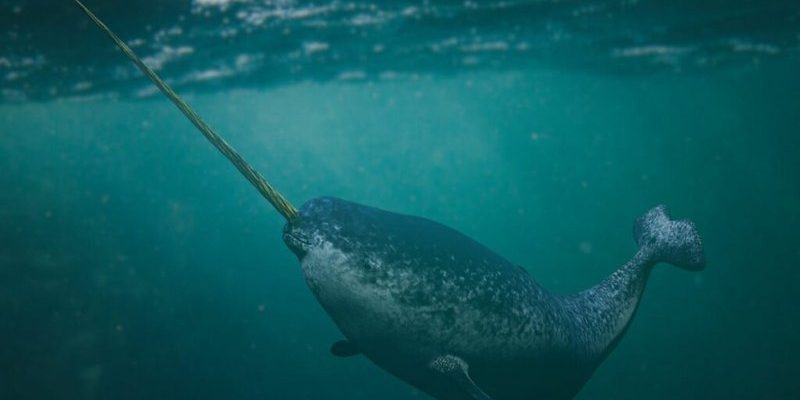
Let’s grab a coffee and explore how these elusive animals thrive in their icy habitats and how humans can connect with them without causing harm. Narwhals mainly dwell in the cold waters of the Arctic, and they aren’t just cute and quirky; they play a vital role in their ecosystem. It’s crucial to understand not just the enchanting features of these creatures, but also how we can appreciate them responsibly.
In this article, we’re going to unwrap all you need to know about safely interacting with narwhals. We’ll discuss their natural behaviors, the dos and don’ts of human interaction, and how science is always evolving to help us protect them. Let’s get started!
Understanding the Narwhal: An Introduction to Their World
Narwhals are remarkable marine mammals, often found swimming through the icy waters of the Arctic Ocean. They belong to the cetacean family, which includes whales, dolphins, and porpoises. The narwhal’s most distinctive feature is its long tusk, actually a tooth that can reach up to 10 feet in length. Think of it as their version of a superpower! This tusk is not just for show; males use it to establish dominance and attract mates.
You might be wondering, what else makes narwhals so special? They have unique adaptations, like their ability to dive deep into frigid waters for food. They can hold their breath for up to 25 minutes while hunting for fish and squid. In a way, they’re like underwater ninjas, perfectly adapted for survival in one of the harshest environments on Earth.
It’s crucial to understand their behaviors and habitats if we want to interact with them safely. Narwhals are generally shy and tend to avoid boats. While they’re curious creatures, they can feel stressed by human presence, so keeping this in mind is essential. A healthy respect for their space is key to ensuring a positive interaction.
How Humans Traditionally Interact with Narwhals
Historically, humans have interacted with narwhals in various ways. Indigenous people living in the Arctic regions have relied on narwhals for food and materials, utilizing their meat, skin, and even tusks for tools and art. This sustainable relationship demonstrates a deep respect for the animals and their environment, showing that interaction can be beneficial when done thoughtfully.
However, contemporary interactions have become more complicated. With increasing levels of tourism in the Arctic, many people are eager to catch a glimpse of these magnificent creatures. While watching narwhals can be awe-inspiring, it’s essential to approach this with care. Boat tours and wildlife expeditions have become popular, but they come with responsibilities.
Let’s face it, we all love the idea of getting close to wildlife, but there’s a fine line. Disturbing narwhals can lead to stress and disrupt their natural behaviors. Proper regulations and guidelines are necessary to protect these incredible beings while allowing people to appreciate them from a safe distance.
Safe Practices for Observing Narwhals
If you’re planning to observe narwhals in their natural habitat, following safe practices is a must. Here are some key guidelines to keep in mind:
- Keep your distance: Stay at least 300 meters (about 1,000 feet) away from narwhals. This helps reduce stress.
- Use quiet vessels: If you’re on a boat, avoid loud engines and fast speeds. Consider using smaller, quieter options.
- Observe from a distance: Bring binoculars or a camera with a zoom lens instead of getting too close.
- Limit time spent watching: Don’t linger too long. Quick visits are better for their well-being.
Following these practices enhances both your experience and narwhal conservation. Remember, the goal is to appreciate these magical animals while allowing them to thrive in the wild.
The Impact of Climate Change on Narwhals
One of the biggest threats to narwhals is climate change. As the Arctic ice melts, it alters their habitat and food sources. Warmer waters can lead to shifts in fish populations, impacting narwhals’ hunting abilities. It’s as though their entire underwater world is changing overnight.
Moreover, ice loss affects their breeding and calving grounds, putting additional stress on this incredible species. If we want to interact safely with narwhals, it’s essential to consider ways to contribute to the fight against climate change. You might wonder how you can help.
Here are a few simple steps:
- Reduce your carbon footprint: Use public transport, bike, or walk whenever possible.
- Support conservation efforts: Contribute to organizations focused on Arctic preservation and marine life protection.
- Spread the word: Educate others about climate change and its effects on wildlife.
By taking action individually and collectively, we can help create a healthier environment for narwhals and other Arctic inhabitants.
Engaging with Narwhals Through Education and Conservation
An excellent way to interact with narwhals is through education and conservation efforts. Many organizations focus on raising awareness about these creatures and their habitats. Participating in educational programs can deepen your understanding while contributing to their protection.
For instance, you might find opportunities to volunteer with local conservation groups working to track narwhal populations or to educate the public about the challenges they face. Engaging with experts helps promote safe interactions and creates a bond between humans and these magnificent beings.
You could also explore eco-tourism initiatives that prioritize responsible wildlife watching. These tours often emphasize conservation principles and help fund research efforts. Investing in experiences that respect wildlife ensures future generations can enjoy the wonder of narwhals.
Final Thoughts: Respecting the Narwhal’s Wild Nature
Interacting safely with narwhals requires a blend of respect, understanding, and responsibility. These unique creatures are vital to the health of their ecosystems, and our approach to observing them matters. Remember, while narwhals might look magical, they are real animals that deserve our protection and respect.
By keeping a safe distance, following guidelines, and supporting conservation efforts, we can appreciate the beauty of these remarkable beings without compromising their well-being. So, as you sip your coffee and dream of adventure, remember to tread lightly when it comes to the narwhals and their icy realms. After all, it’s our shared responsibility to ensure they continue swimming gracefully through the Arctic waters for generations to come.

